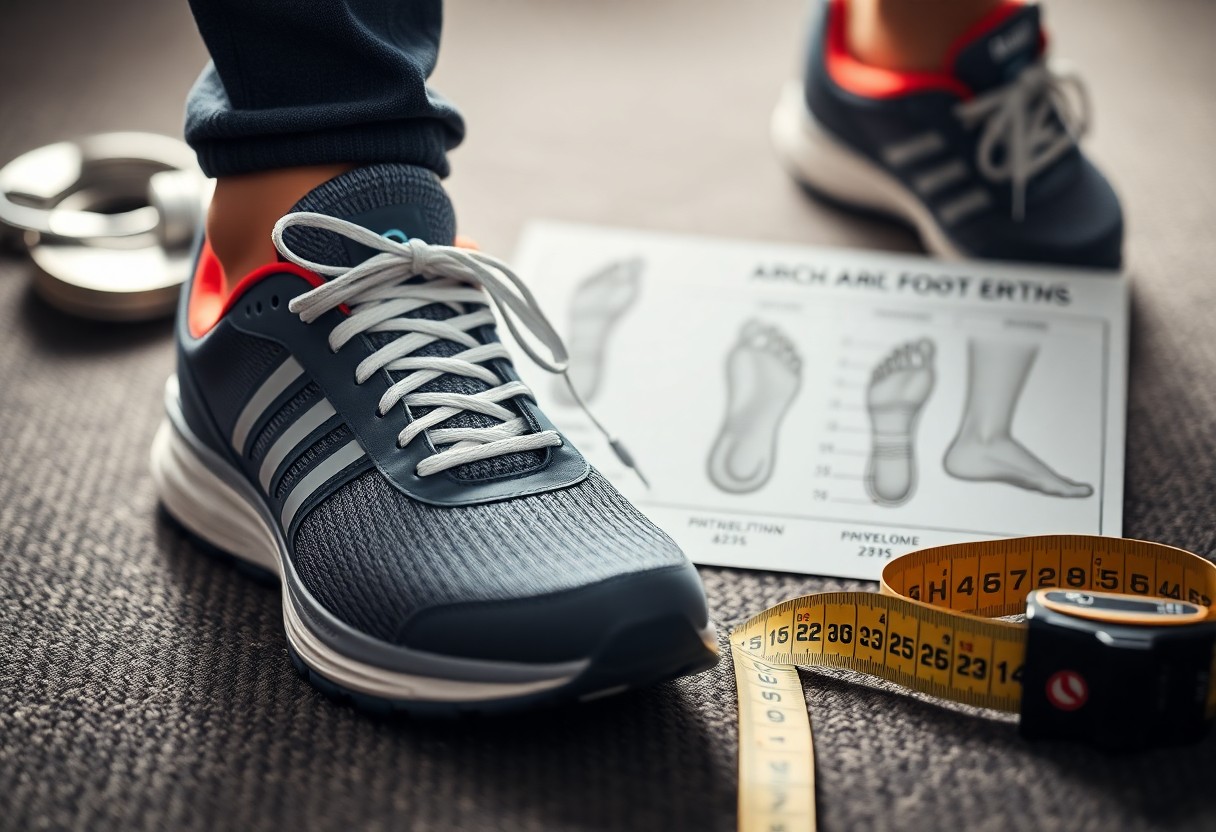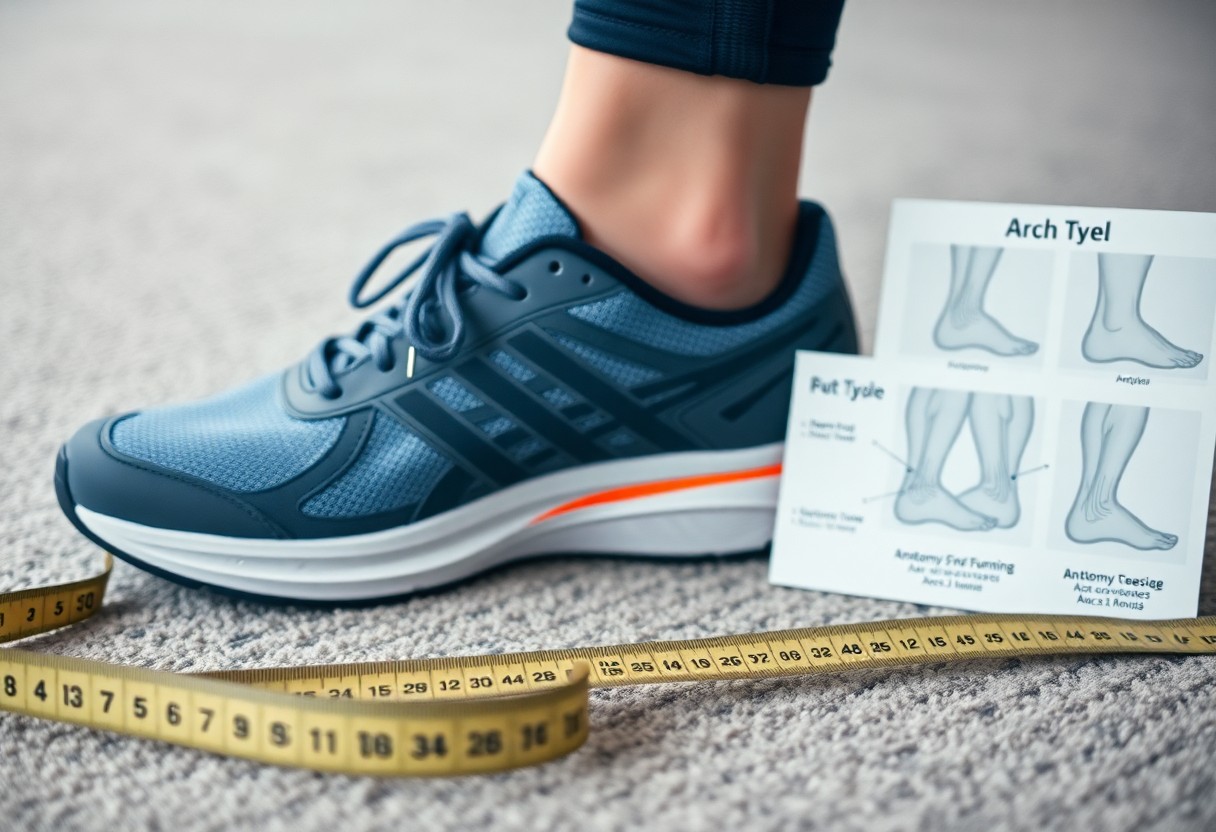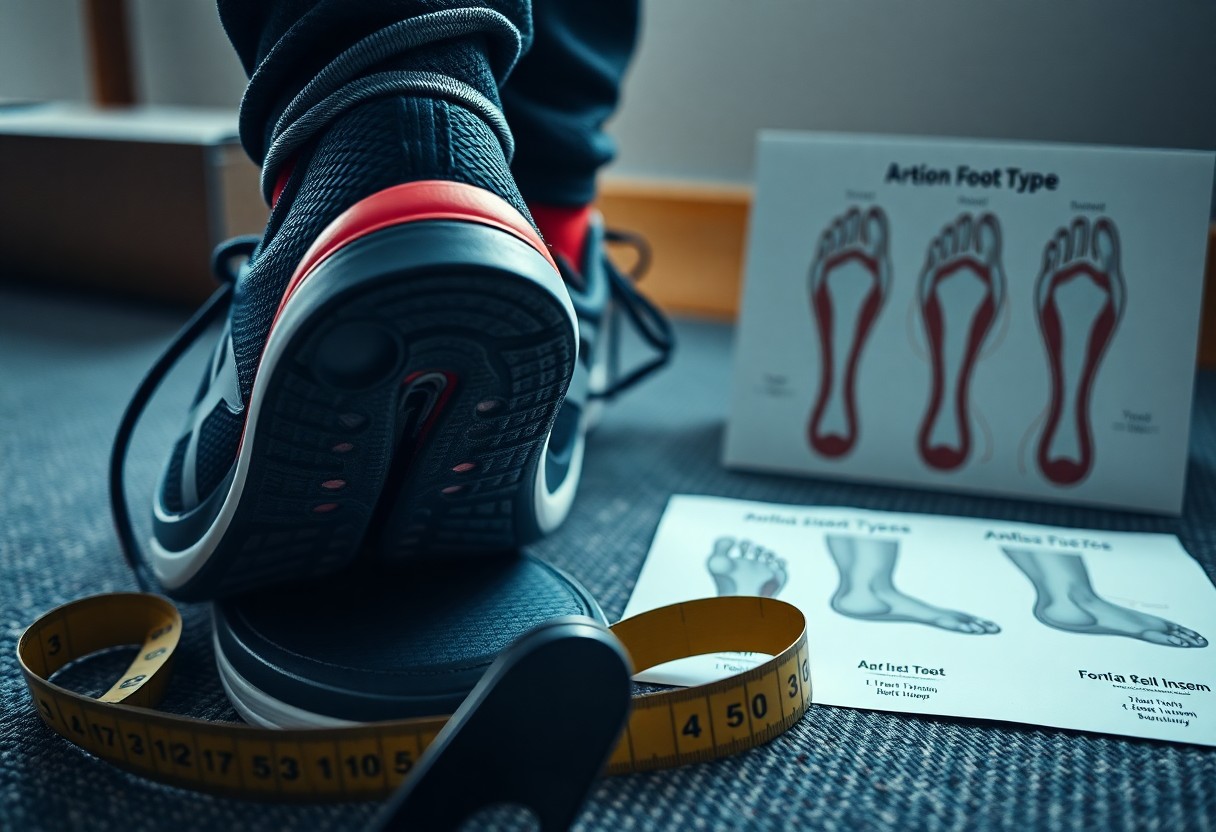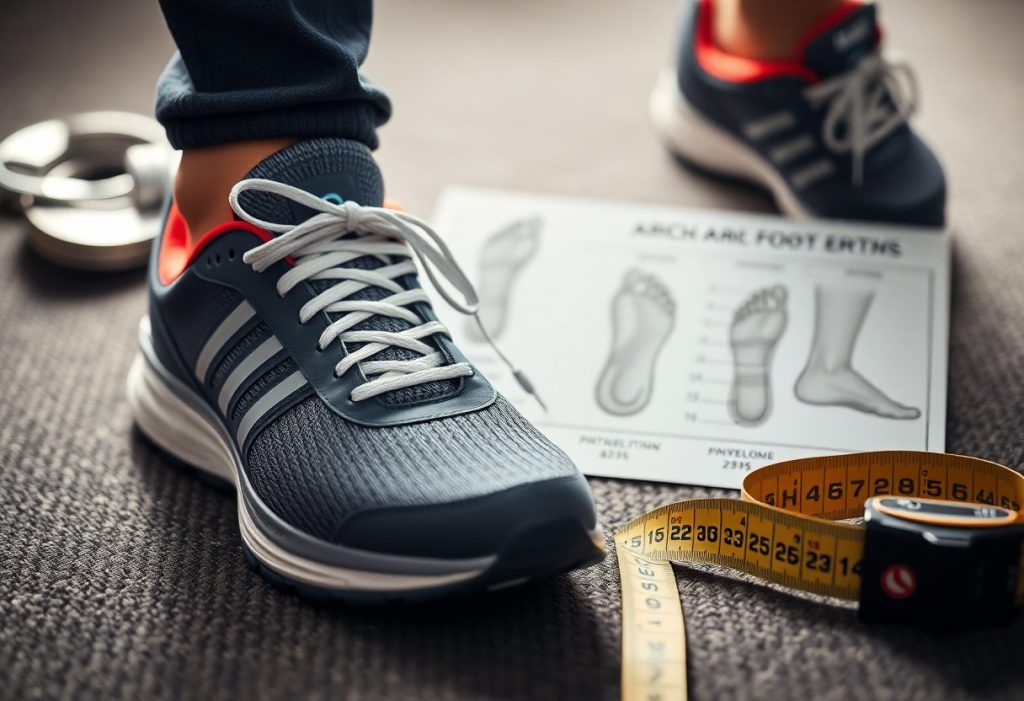Supporting your feet effectively does not always mean adding arch support to your shoes. It may surprise many to learn that most people do not actually need arch support in their footwear. Scientific studies even indicate that going without arch support can enhance the strength of your foot muscles. Over time, reliance on artificial supports can lead to muscle weakness. The human foot is naturally designed with arches that flex and adapt to varying surfaces, and restricting this natural movement with rigid supports could negatively impact your foot health in the long run. This article aims to shed light on the science behind arch support, helping you make informed choices about your foot health.

Uncovering the Historical Development of Arch Support in Footwear
The natural support system of your feet has played a crucial role in the evolution of footwear design throughout history. The concept of arch support gained prominence in the 1920s when Dr. William Scholl introduced commercial orthotics to the public. Before this innovation, individuals relied on the inherent strength and flexibility of their feet. This historical perspective helps us understand how our knowledge of foot health has transformed over the years.
Tracing the Evolution of Traditional Footwear Practices
The history of footwear shows that ancient cultures primarily used simple, flat sandals or often walked barefoot. These practices fostered natural foot development and strength. The feet of our ancestors remained robust and flexible, thriving without artificial supports, as supported by research on indigenous populations who continue to use traditional footwear. This historical context emphasizes the vital role of natural foot mechanics in promoting lasting foot health.
Analyzing Modern Standards in Footwear Design
By the mid-20th century, particularly during the 1950s, shoe manufacturers began integrating built-in arch support as a standard feature in footwear. Nowadays, most contemporary shoes are crafted with structured arch support, which has become an industry norm despite the limited scientific evidence supporting its universal necessity. This trend highlights a shift in consumer expectations and industry practices, while also raising questions about how these designs may affect foot health.
Currently, arch support is so widespread that 70% of modern shoes come with this feature. Nevertheless, research published in the Journal of Foot and Ankle Research indicates that excessive reliance on arch support may lead to muscle weakness in your feet. As a result, many podiatrists now advocate for periods of barefoot walking and the use of minimally supportive shoes to help maintain natural foot strength.

Examining the Complex Architecture of Your Feet
Your feet consist of 26 bones, 33 joints, and over 100 muscles, and they perform most effectively when allowed to move freely. The arch of the foot acts as a self-supporting structure that gains strength through regular use, while artificial support can lead to its weakening. Research shows that 75% of individuals who wear conventional shoes with arch support experience decreased foot muscle activity, which can result in diminished natural foot strength over time.
Understanding the Marvels of Natural Foot Mechanics
Your foot’s natural design is an extraordinary example of engineering, featuring a complex system of self-support. Walking barefoot or in minimal shoes allows your feet to achieve a full range of motion, enabling your arches to flex and strengthen organically. Studies indicate that individuals who frequently walk barefoot or choose minimal shoes develop stronger foot muscles and more stable arches compared to those who depend on supportive footwear. This reinforces the importance of natural movement for optimal foot health.
Boosting Muscle Function and Development
When your foot’s natural movement is disrupted, it can hinder its development. Your foot muscles need regular engagement through natural activities to sustain their strength. Research published in Nature suggests that wearing shoes without arch support contributes to stronger intrinsic foot muscles. This connection highlights the critical role of natural movement in achieving optimal foot health.
Furthermore, it’s essential to understand the implications of wearing shoes with built-in arch support. Wearing these shoes can result in reduced engagement of foot muscles, leading to potential weakness over time. Studies have shown that transitioning to minimal footwear can result in a significant increase in foot muscle strength by up to 60% within eight weeks. However, it’s crucial to approach this transition with caution, especially if you have existing foot conditions, to prevent injuries.
Investigating Research and Evidence Related to Foot Health
If you’re keen to delve into the science behind arch support, numerous studies reveal that your feet can become stronger without the need for artificial support. Various investigations indicate that natural foot movement encourages better muscle development and enhances arch stability, highlighting the essential role of biomechanics in maintaining foot health.
Highlighting Significant Scientific Findings on Arch Support
Among the most significant research findings, a study published in Nature demonstrates that individuals who wear minimal footwear develop foot muscles that are 50% stronger compared to those wearing traditional supportive shoes. This evidence supports the idea that regular movement and exercise allow your feet to maintain their arches naturally.
Comparative Analysis of Footwear Choices Among Different Populations
Contrasting Traditional Shoe Users with Minimal Shoe Users
| Traditional Shoe Users | Minimal Shoe Users |
| Exhibit higher rates of flat feet | Demonstrate superior arch strength |
| Show weaker foot muscles | Exhibit stronger foot muscles |
A comprehensive analysis of various populations reveals significant disparities in foot health. The structure of your feet can adapt significantly based on the type of shoes you choose to wear.
Insights from Global Population Studies
| Developed Countries | Barefoot Communities |
| 20% flat foot occurrence | 3% flat foot occurrence |
| Higher reliance on arch support | Natural arch strength |

Understanding the Support Paradox in Footwear Choices
Challenging prevalent beliefs, overreliance on arch support in shoes can undermine your feet’s natural strength. The human foot is intricately structured with a complex system of muscles, tendons, and ligaments that work together to provide natural support. When artificial arch support takes over this function, your foot muscles may become less engaged, leading to gradual weakening.
Examining the Dependency Cycle Created by Arch Support
The continuous use of arch support fosters a detrimental cycle. Feet can become reliant on external support, resulting in muscle atrophy. Research suggests that 70% of individuals who regularly use arch supports report increased discomfort when walking without their supportive shoes, clearly illustrating the development of this dependency.
Understanding the Link Between Muscle Weakness and Arch Support
Wearing shoes with built-in arch support may weaken your intrinsic foot muscles by as much as 50%, according to findings published in Nature. This weakening compromises your feet’s natural arch support system, potentially leading to conditions such as flat feet and other foot-related issues. It’s important to recognize that this muscle weakness can extend beyond your feet, as weakened foot muscles can negatively impact your overall posture and balance. Research indicates that individuals transitioning to minimal footwear often experience a 60% increase in foot muscle strength within six months.
Exploring Natural Alternatives to Enhance Foot Health
For those looking to move away from traditional arch support, various natural options can enhance foot strength. These approaches emphasize allowing your feet to function as intended, facilitating the development of stronger foot muscles and more stable arches through organic movement.
Adopting Minimalist Footwear for Enhanced Natural Movement
Minimalist shoes, characterized by zero drop soles, wide toe boxes, and flexible materials, encourage natural foot movement. These designs allow your feet to move freely, supporting proper foot mechanics and promoting natural arch strength. Research indicates that consistent use of minimal footwear can enhance foot muscle strength by up to 60% through daily activities.
Safe Strategies for Transitioning to Minimal Footwear
When considering a shift to minimalist footwear, it’s crucial to adopt a careful and gradual approach for your comfort and safety. Start by wearing minimal shoes for short periods, gradually increasing the duration over several weeks. This strategy helps prevent overuse injuries as your feet adapt to their newfound freedom, ensuring a smoother transition.
A successful transition should ideally incorporate specific foot-strengthening exercises. Begin with 10-15 minutes per day in minimal shoes, adding an additional 5-10 minutes each week. Include exercises like toe spreads and short barefoot walks on safe surfaces. This gradual approach allows you to minimize the risk of common transition injuries while effectively building your natural arch strength.
Considering Medical Factors for Optimal Foot Health
It’s important to recognize that your foot health requires individualized attention. While natural foot movement is beneficial for muscle strength, certain medical conditions may require specific support. Factors such as your foot structure, activity level, and any pre-existing conditions will significantly influence your ideal footwear needs.
Recognizing When Arch Support Is Essential
Contrary to common beliefs, arch support is not universally necessary. However, individuals with acute injuries, severe flat feet, or specific medical conditions may benefit from temporary or permanent arch support. Research suggests that only 10-20% of the population truly requires specialized arch support for medical reasons, underscoring the importance of personalized assessments.
Guidelines for Comprehensive Foot Health Assessments
To ensure informed footwear choices, it’s advisable to consult a foot health professional. Comprehensive assessments should include gait analysis, evaluation of foot structure, and review of medical history. These components are crucial for determining whether you need arch support or if transitioning to minimal footwear is a suitable option.
Support from a qualified professional can clarify and guide your foot health journey. A thorough assessment should encompass measuring arch flexibility, assessing muscle strength, and analyzing walking patterns. Your healthcare provider should also consider your daily activities and any past foot injuries to create an effective treatment plan tailored to your unique needs.
Re-evaluating Footwear Choices and Their Impact on Foot Health
Ultimately, your footwear choices play a significant role in determining your foot health. It is now clear that arch support is unnecessary for most individuals and may, in fact, lead to weakened foot muscles over time. Your feet inherently possess strength and flexibility, functioning best when allowed to operate as nature intended. If you’re contemplating a switch to minimal footwear, initiating this process gradually will facilitate effective adaptation. The compelling evidence supports the idea that allowing your feet to function without artificial support can result in stronger muscles and improved foot health for the majority. Always consider your personal needs and consult a foot health professional for specific concerns.
Common Questions About Arch Support and Foot Health
Do healthy feet require arch support in shoes?
Most healthy feet do not require arch support in shoes. Research indicates that natural foot strength develops more effectively without artificial support. The muscles and arches of the foot perform optimally when allowed to operate naturally. This aligns with studies on populations that frequently go barefoot or prefer minimal shoes, which show stronger foot muscles and fewer arch-related issues.
Can relying on arch support weaken feet over time?
Yes, prolonged dependence on arch support can lead to weakened foot muscles. When artificial support substitutes for the function of foot muscles, these muscles become less engaged and gradually lose strength. This creates a cycle of dependency. Research published in Nature indicates that individuals who consistently wear conventional shoes with arch support often experience weaker foot muscles relative to those who choose minimal footwear.
Who genuinely needs arch support in their footwear?
Certain individuals with specific foot conditions, injuries, or medical issues may genuinely benefit from arch support. This includes those diagnosed with flat feet, particular foot injuries, or structural abnormalities. However, these situations should be evaluated by a foot health professional who can develop an appropriate treatment plan. The goal should be to restore natural foot function whenever possible, rather than relying on permanent support.
The Article Arch Support: Essential Facts About Shoe Necessities Was Found On https://limitsofstrategy.com


I found your insights on arch support in footwear particularly enlightening. It’s fascinating to consider how much our understanding of foot health has evolved over the years. I have often been led to believe that arch supports were necessary for comfort and proper foot function, especially during long periods of standing or walking. However, your mention of how reliance on artificial supports can lead to muscle weakness really resonates with me.
Your insights on the importance of natural foot function versus artificial arch support really resonate with me. It’s fascinating how our understanding of foot health has evolved and how much misinformation has circulated around footwear choices. I remember when I underwent physical therapy for some minor foot pain, my therapist emphasized the value of strengthening my foot muscles rather than relying on inserts or specialized shoes. It was a shift in perspective—learning to appreciate and support the body’s natural mechanics instead of restricting them.
It’s great to hear that you found the discussion on natural foot function versus artificial arch support meaningful. The shift in how we approach foot health is indeed intriguing, and your experience in physical therapy highlights a crucial point. Strengthening the foot muscles can be transformative, allowing the body to operate more efficiently and comfortably.
This discussion about arch support is indeed thought-provoking. I have often found myself questioning the reliance on orthotics and arch supports, especially as an avid runner. Initially, I assumed that the right level of support was essential for preventing injuries, but I’ve recently been experimenting with minimalist footwear.
It’s interesting to hear about your journey with arch support and minimalist footwear. Many runners find themselves in a similar position, weighing the benefits of additional support against the potential freedom of a more natural running style.
It’s interesting to hear about your journey with arch support and minimalist footwear. I used to believe that the more support you had, the better off you were—especially as someone who also enjoys running. Over time, though, I realized that our bodies are pretty adaptable and can often benefit from a more natural approach to movement.
It’s great to hear about your experiences with arch support and footwear choices. Your journey echoes what many runners and athletes go through. Initially, the belief that more support equals better performance is quite common, especially with all the marketing around cushioned shoes. Over time, as you mentioned, many of us discover how adaptable our bodies truly are.
It’s great to hear about your journey with minimalist footwear. Many runners have found themselves at a crossroads between traditional arch supports and a more natural approach. While early beliefs emphasized the need for support to avoid injuries, more recent evidence suggests that our feet have a remarkable ability to adapt.
It’s interesting how our understanding of arch support and footwear has evolved over the years, especially in the running community. I used to be a firm believer in the necessity of orthotics too. It was almost a rite of passage for runners to get fitted for shoes that were ‘just right’ for their arches. However, like you, I’ve also dabbled with minimalist footwear and found it to be quite an eye-opening experience.
This is such an enlightening perspective on foot support! I’ve often felt that my shoes were overly cushioned, and it’s fascinating to consider how giving our feet the freedom to move naturally could build strength over time. It reminds me of how many athletes reintegrate barefoot training to improve their performance.
It’s interesting how experiences with footwear can shape our views on foot health. Many people don’t realize the difference a shoe’s design can make—not just in comfort, but in how our body functions as a whole. You mentioned feeling like your shoes might be too cushioned, and that’s a sentiment shared by quite a few. There’s a balance to strike. Shoes that are overly padded can sometimes mask natural sensations, which don’t just provide comfort but also important feedback for our bodies.
This is such a fascinating topic, and I appreciate how you’ve delved into the nuances of foot health and the history of arch support. I’ve always been intrigued by how footwear development reflects broader cultural and health trends. The reliance on products promising comfort — like arch support — seems to have become a reflexive choice for many of us, particularly in a world where we are often on our feet for long periods.